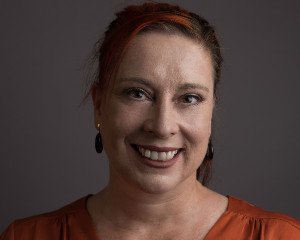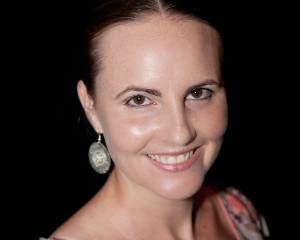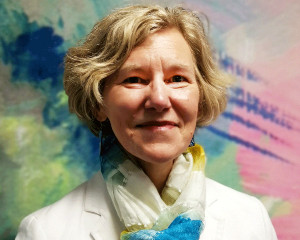HRM speaks with three female HR leaders for International Women’s Day.
In an article for International Women’s Day, you might expect us to cite statistics about the struggles of women in the workforce, or the gender pay gap, or the glass ceiling. While it’s incredibly important to shine a light on facts and highlight disparities, these are topics HRM covers often. We don’t need a dedicated day to talk about what we believe to be incredibly important issues.
Instead, we’re going to use this day to highlight the stories of three very different but equally inspiring women in the HR community.
A diversity emergency
Sonja Braidner FCPHR is a senior consultant at Eveiller Consulting. She’s known as an ‘inclusion and diversity specialist’, but this only scratches at the surface of her fascinating career.
Braidner used to work in the entertainment industry as a lighting designer and production manager, at a time when there were very few women in technical theatre. She quickly spotted an imbalance in how people were treated in the workplace. This, paired with her background in human rights and politics, sparked her interest in the D&I space.
“I saw that those who weren’t being treated equally had so much to offer,” says Braidner. “I thought there was a strong business argument to bring in different capabilities.”
While she holds a general interest in cultivating inclusive workplaces, she wanted to home in on a sector that required a little more work than others: emergency services. In 2018 she was awarded the Winston Churchill Fellowship which allowed her to take a deep dive into researching this historically male-dominated industry.
(You can download Braidner’s research report here).

“Globally, the notion of women and others coming into emergency services, but in particular firefighting, is an evolving space. We’re talking about an industry that is more than 90 per cent male dominated across the world. However, there’s a distinct correlation between making emergency services more inclusive and reflective of the societies in which they sit, and improved public safety,” she says.
Braidner spent much of 2018 travelling the world to see how other countries were managing diversity within emergency services to research international ‘best practice’. She found the lack of inclusion was a worldwide issue.
“First stop, I visited Japan and discovered the two biggest impacts on the inclusion of women and others in emergency services is Japan’s lived experience of disaster; and the collaborative culture which mindfully adopts the concept of Kaizen – continuous improvement.
“Following the 2011 earthquake and tsunami, many people spent up to three weeks in emergency shelters. There were incidents of alleged sexual harassment and shelters ran out of supplies for children and sanitary products for women.
“When authorities looked back they realised their disaster management and planning processes involved almost no women. It was men planning for men. Now services include women in these processes,” she says.
In Akureyri, the second biggest city in Iceland, Braidner learned they had instituted a hard quota to recruit more women into the fire services.
“Initially, a couple of the old firefighters were a little bit miffed. They complained because they thought they couldn’t swear around the women, and now they’d have to pick up their smelly clothes in the station,” Braidner laughs.
“But the fire service instigated the quota with the complete support of their municipal authorities, and there was absolutely no public or workplace cultural backlash. Only support. In Iceland, they’ve had a female president and now a female prime minister. They also had the world’s first openly gay president. Inclusion and acceptance is simply a part of Iceland’s cultural psyche.”
Back in Australia, Fire and Rescue NSW instigated a 50/50 gendered recruitment program in 2016. However, unlike Iceland, the service did, and continues to, receive backlash from some employees, the public and some media commentators.
To attract and keep diverse talent, Braidner says an organisation requires an authentic culture of inclusion. Leaders need to lead inclusively, model positive workplace behaviours and confidently engage staff in the benefits that inclusion and diversity bring to all employees.
“Creating positive and lasting inclusion in traditional, paramilitary workplaces is nuanced work. The lessons of which are equally transferable across many other industries. Emergency services, while very homogenous, involve generous, caring people who serve society’s most vulnerable. It’s about coaching employees and leaders to understand that inclusion brings enhanced response efficiencies and closer ties to the communities they protect. In fire and rescue agencies it’s about Firefighter Sam AND Firefighter Samantha.”
Baby on board
Dr Anna Blackman FCPHR – an associate professor of management at James Cook University – has travelled the world, completed a PHD, written a book, been published in several academic journals, won various accolades and given birth to six children. Six.
Blackman has dedicated her life to academia and says it has been a great industry for balancing work and family. But that’s not to say it would be easy for everyone.

There is definitely an unconscious bias, she says, when it comes to women, especially those of “childbearing” age, but she acknowledges she’s been very lucky.
“When I first went for my job at the university, they were really supportive. I was nine months pregnant in my interview and we were joking whether it was quicker to drive me to the hospital or call the ambulance if I suddenly went into labor,” she laughs.
“There have been times where I’ve had no option but to bring one of my kids to work and felt like that’s been frowned up by my boss. But then I’ve had bosses who have been really welcoming, like one boss who carried my baby around during an executive meeting.”
Though her workplace offers great maternity leave and flexible working options, Blackman admits she never really stops… unless she’s in the delivery room.
“I’ve often worked while on maternity leave. I know you’re not supposed to,” she laughs, “but I can have data collecting while I’m away or have papers edited. Last time I was on leave I actually wrote a book.”
She’s lucky to work in a field where this is possible, as many other women in her situation would have had to park their careers and risk losing out on value development and promotion opportunities.
The key, she believes, lies in encouraging managers and HR professionals to find flexible work arrangements that work for individuals.
“I used to work within fewer hours than others, say 9am til 2pm, but I still got as much done in those hours. To foster workers, you need to get to know the individual to understand what they specifically need.”
Helping women rise
Getting women into the workforce is one challenge. Keeping them there during child-rearing years is another. But there’s a third and equally important barrier facing working women: rising in the ranks.
“I’ve always been interested in helping women to attain leadership roles,” says Rosemary Guyatt FCPHR, AHRI’s general manager, people and culture.
At a specific point in her 30 year HR career, which spans a variety of industries, Guyatt made a conscious decision to make career development her speciality.
Unfortunately, this decision was borne from a personal struggle. Fifteen years ago, Guyatt was diagnosed with cancer. During her recovery, she had to take some time off work, but she didn’t want this to halt her career progression. This feeling would be familiar for many women who’ve left the workforce to have children.
“The organisation I was working for at the time was a large technology firm. It had really great flexible work policies, so I was able to take leave and come back and work part-time.”
A little later down the line, like Blackman, Guyatt used the down time afforded to her from a part-time load to upskill, completing a Masters in Social Science, Career Management and Development.
“I’ve always been interested in how people navigate careers. There’s sometimes a luck or serendipity factor, but often it’s about identifying the skills you need to have more control over the direction of your future career.”
Since then, mentoring and coaching has been an integral part of Guyatt’s working life.
“It’s evident that some women undersell themselves. By seeking out some mentoring or coaching, they can see their experiences in a different light.”

To illustrate this, Guyatt points to the common idea that female candidates often feel they have to meet 90 per cent of the criteria to apply for a role, whereas men might feel confident enough if they only meet 50 per cent of the requirements. Guyatt is passionate about helping these women to reframe their thinking.
For young, female HR professionals (and men, too), she highly recommends seeking out a mentor.
“The validation you get from mentoring is very important. It helps you to doubt yourself less. Getting these insights early allows you to mature quickly. Which is especially important in HR as you’re in an influential position.”
No quick fixes
Blackman believes most workplaces don’t need radical change to attract and retain more women, they just need flexible work policies.
“Women, and parents in particular, should know that you don’t have to be in the office to work. We need to stop thinking that walking up and down the hallways is somehow better than letting someone work at home with their kids.”
When speaking about how to bridge the gender gap, Guyatt says there’s no “quick fix”.
“It’s quite an investment,” she says. “And it requires a lot of energy from the people who think it’s important.”
“It’s about looking at the gender balance in graduate programs, promoting women’s career stories and providing mentoring and coaching. Then flexible working should just run alongside someone’s career path.
“Hopefully the businesses that are leading in this space end up getting the competitive advantage. Those are the companies people will want to work for.”
Sonja Braidner FCPHR will be speaking at AHRI’s Diversity and Inclusion conference this year in May. To hear more from her and other inspiring speakers, register your interest.


Again we talk about the gender balance issues and again we completely avoid any action on balancing gender in HR. Why?
When can we expect diversity in HR itself, with the opportunity for Men to lead the charge in HR?
Will AHRI communicate and advertise men in HR with the same level of enthusiasm and spark as they do for women? That would be a signal of change for everybody.
I’m sorry Bradley and David but are you serious?? It’s International Womens Day for Gods sake!!! Let us have our turn for once!!!
When can we expect AHRI to report from Mens Perspective on workplace harrassment from female staff who want a promotion and/or your job?
Without any Diversity and Inclusion, Gender diversity, Leadership, thats why we only read about Women in HR – can we read something new for everybody soon please?